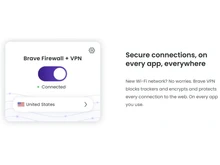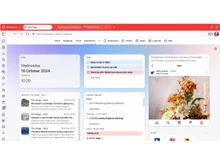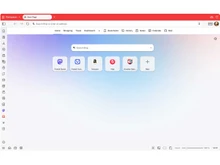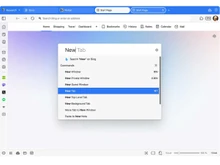Brave vs Vivaldi Browser: What’s Best for You?
Choosing the right web browser can greatly impact daily browsing experience, online privacy, speed, and productivity. Among the many options, Brave and Vivaldi are popular Chromium-based browsers, each with distinct philosophies and unique features. This guide is designed to help you determine which utility software best suits your preferences, workflow, and priorities.
Two Chromium Browsers with Different Approaches
Both Brave and Vivaldi build upon the Chromium engine. Both of these browsers share core rendering technology and wide compatibility with websites and extensions. Yet, their approach and user experience differ fundamentally:
- Brave focuses on privacy-first, fast, and clean browsing.
- Vivaldi emphasizes customizability, user control, and rich features.
Interface and Customization
- Brave: It offers a clean and straightforward user interface designed to keep browsing simple. It avoids clutter by default and lets users focus on content. While customization options exist (like toggleable full URLs, wider address bar, hide/show home button, and standard light/dark themes), it’s generally less customizable than Vivaldi. The interface is intuitive for users who want a plug-and-play, hassle-free experience without wrestling over every UI detail.
- Vivaldi: It delivers a power-packed UI that feels fuller with options like a sidebar web panel, stacked tabs, a customizable quick command bar, and lots of interface elements visible by default. It offers many built-in themes and allows users to customize almost everything. From color schemes, tab position, and behavior (top, bottom, left, right) to keyboard shortcuts, mouse gestures, and even integrating tools like calendar, email, and notes. Users who prefer extensive changes for maximum productivity and multitasking can take full advantage of Vivaldi.
Privacy and Security
- Brave: Brave is 100% open-source with core code publicly available on GitHub. Its main selling point is default privacy protection, including ad and tracker blocking, fingerprinting protection, HTTPS upgrades, and cookie isolation. Brave also supports privacy-enhancing features like the IPFS protocol and ships with its own privacy-providing Brave Search. This browser offers a clear privacy-first model where users don’t need to dig into settings to be protected.
- Vivaldi: Vivaldi’s foundation is Chromium’s open-source engine, but its user interface is closed source. While Vivaldi provides privacy-focused browsing, it requires users to actively configure blocking lists or settings, such as DNS-over-HTTPS. It does not enable strong fingerprinting protection by default. Vivaldi’s approach hands control to the user who prefers to build and tweak personal privacy tools manually within the browser’s flexible settings panel.
Productivity Features
- Vivaldi: This browser’s productivity features include a built-in calendar, mail client, RSS feed reader, and pomodoro timer. Additionally, it excels in tab handling with features such as:
- Two-level stacked tabs for organizing large numbers of open tabs.
- Tab groups, tab stacking with accordion style, and customizable tab width.
- Ability to move tabs to different edges of the window (left, right, bottom, top).
- Multiple workspaces for different projects or contexts.
- Sidebar web panels for quick access to bookmarks, notes, social media, or any web page without opening a new tab.
- Brave: It offers tab grouping with naming and color coding to organize tabs. Brave lacks more advanced features like multi-level stacks or side placement of tabs. It’s dark mode with tab grouping can sometimes appear visually cluttered compared to Vivaldi’s polished and highly customizable tab handling. Brave keeps the tab experience straightforward for users who don’t need advanced tab management but want basic organization.
Performance and Resource Usage
Both browsers deliver fast and snappy browsing experiences with slight differences:
- Brave is generally slightly faster in benchmarks like Speedometer and feels lightweight in terms of CPU and memory consumption.
- Vivaldi, given its feature richness, uses more memory and can feel heavier on system resources, especially with multiple tabs and open panels.
For most users with modern hardware, this difference is modest, but it may be noticeable on low-end machines or when running many resource-intensive tabs.
Monetization and Extras
- Brave Rewards: Users can opt to see privacy-friendly ads and earn BAT tokens as rewards, which can be used to tip content creators or redeemed with partners.
- IPFS Support: Enables decentralized web content access, helping fight censorship.
- Brave Search: Integrated search engine aimed at protecting user privacy and providing unbiased results.
- Easy Integration: Integration of tools like calendar, email client, RSS feed, and pomodoro timers inside the browser.
- Additional Customizations: Extensive mouse gestures and keyboard shortcuts customization. Sidebar web panels for multitasking without context-switching.
- Default VPN: Native integration with ProtonVPN for private browsing within the browser without extensions.
Privacy Settings Breakdown
Both browsers offer native ad and tracker blocking and let users tweak privacy preferences. However:
- Brave’s privacy protections are enabled by default with clear visual feedback on what’s blocked, so users don’t need expert knowledge to stay safe.
- Vivaldi provides controls but expects a more engaged user willing to configure privacy tools, DNS settings, and extensions manually.
SWOT Analysis: Brave vs Vivaldi
| SWOT Analysis of Brave vs Vivaldi |
| Aspect |
Brave |
Vivaldi |
| Strengths |
- 100% open source with strong privacy by default.
- Built-in Brave Rewards and Search.
- Native ProtonVPN integration.
|
- Fast and lightweight, with Simple UI.
- Highly customizable UI.
- Best tab and workspace management.
- Integrated productivity tools.
|
| Weaknesses |
- Less customizable UI.
- Crypto features may not appeal to all users.
|
- Proprietary UI, not fully open source.
- Heavier resource usage.
- Requires tweaking for privacy to match Brave.
|
| Opportunities |
- Expand privacy-focused features.
- Grow Brave Search ecosystem.
|
- Improve tab management.
- Improve sync reliability.
- Streamline privacy settings.
- Expand ProtonVPN capabilities.
|
| Threats |
- Competition from feature-rich browsers like Vivaldi.
- Criticism of crypto rewards.
- User fatigue with ad models.
|
- Slower performance perception.
- Steeper learning curve for privacy configuration.
- Competition from simpler browsers.
|
Side-by-Side Feature Comparison Table of Vivaldi vs Brave
| Comparison of Brave vs Vivaldi |
| Feature |
Brave |
Vivaldi |
| User Interface |
Minimalist and clean |
Feature-rich and highly customizable |
| Open Source |
Fully open-source |
Core Chromium open-source; UI proprietary |
| Default Privacy Protection |
Strong ad/tracker blocking enabled by default |
Basic blocking with customizable options |
| Tab Management |
Tab grouping with naming and colors |
Advanced stacking, tab groups, repositionable tabs |
| Performance |
Lean, fast |
More resource-intensive due to many features |
| Unique Features |
Brave Rewards, IPFS, Brave Search |
Integrated mail, calendar, RSS, ProtonVPN |
| Sync Across Devices |
Smooth and reliable sync |
Sync available; sometimes slower |
| Collaboration Features |
None |
None |
| Customization |
Limited customization on UI elements |
Extensive UI, shortcut, mouse gesture customization |
| Built-in VPN |
No |
Yes (ProtonVPN integration) |
| Mobile Apps |
Yes, with crypto integrations |
Yes, basic mobile experience |
| Pricing |
Free; Premium Search starts from $3.00/month. |
Price on request |
When to Choose Brave or Vivaldi?
Choose Brave if you:
- Want strong privacy and security out of the box without setup hassles.
- Prefer a simple, clean browsing experience with an intuitive interface.
- Are interested in supporting content creators through novel methods like Brave Rewards.
- Require faster performance on modest hardware or aim for a lean browsing footprint.
- Appreciate the idea of privacy-respecting search integrated into your browser.
Choose Vivaldi if you:
- Enjoy deep customization and tweaking of your browser’s looks and functionality.
- Need advanced tab management and workspace organization for multitasking.
- Like having built-in productivity tools like email, calendar, RSS feeds, and timers.
- Want native VPN integration for easier private browsing without extra tools.
- Prefer having rich interface features and multitasking capabilities all in one place.
Techjockey Verdict
Brave and Vivaldi cater to two very distinct types of users. Use Brave if you want a privacy-first, fast, and lean browser with minimal fuss. Additionally, opt for Vivaldi if you want a feature-packed, highly customizable browser that acts as a powerful all-in-one workspace.
Choosing based on your workflow and privacy needs will maximize both productivity and online safety. Some users even keep both installed to use Vivaldi for heavy multitasking and Brave for lightweight, secure browsing.
For tailored utility software recommendations or help setting up browser for your daily workflow, contact our Techjockey Team today!


 12 Ratings & 12 Reviews
12 Ratings & 12 Reviews




















